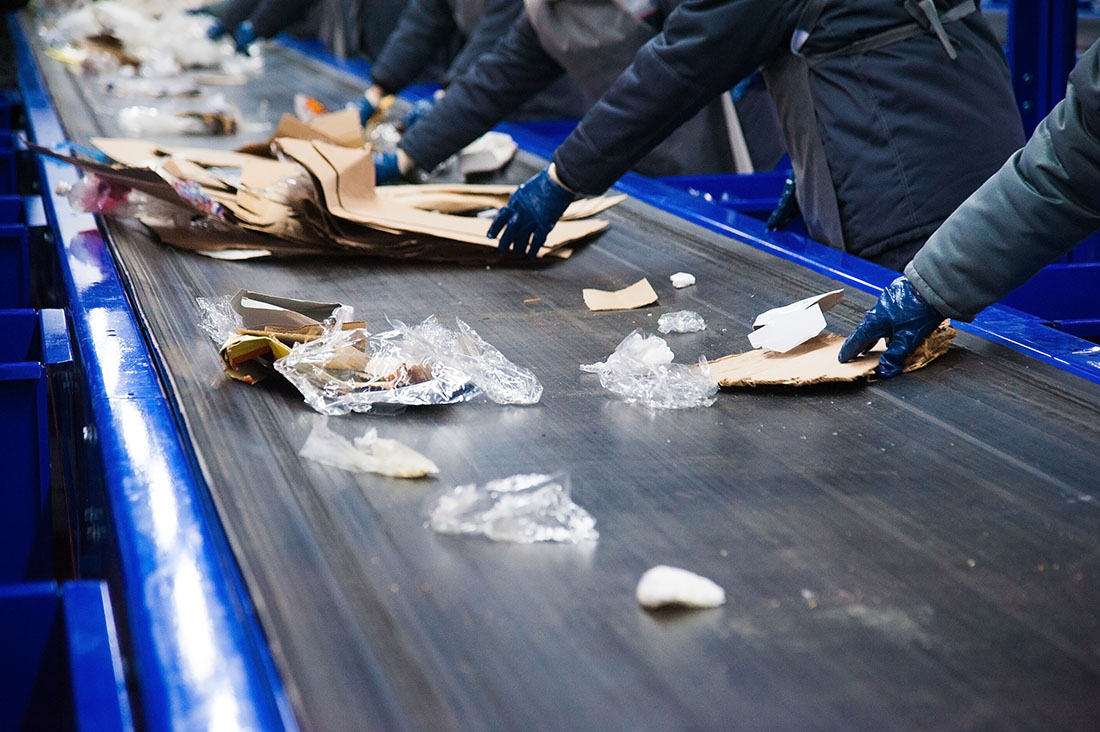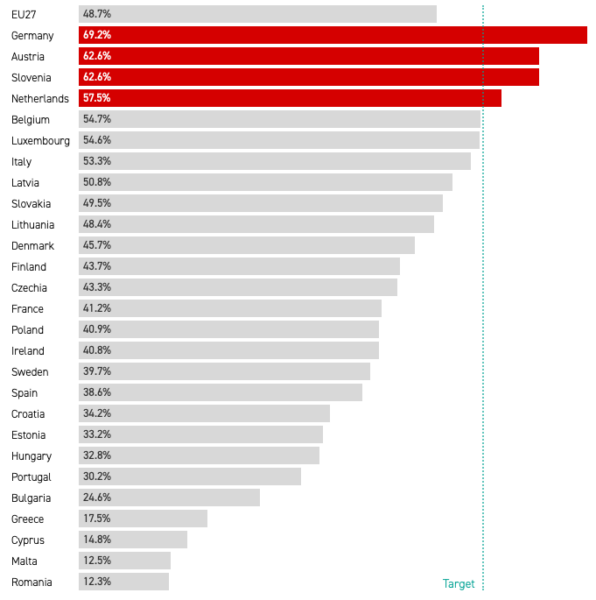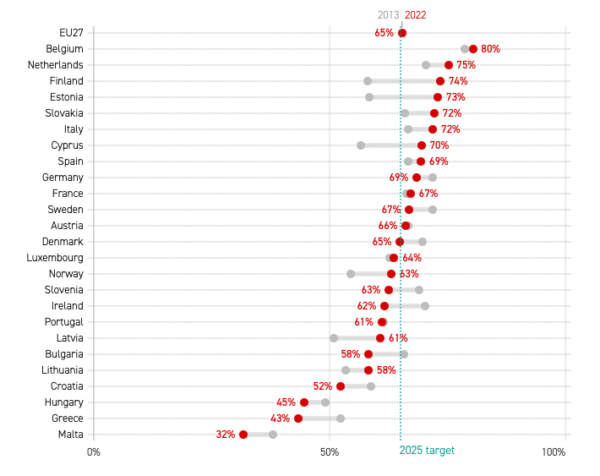Can the EU Hit Its 2025 Recycling Targets?

Based on the latest updates from the European Environment Agency (EEA), many doubt whether all EU countries will achieve the 2025 recycling targets.
The European Commission adopted the European Circular Economy Package in 2015 to help the EU transition to a circular economy. To achieve its goals, the package includes a series of legislative proposals and action plans with clearly defined recycling targets for 2025, 2030, and 2035. Specifically, the 2025 targets include recycling 55% of municipal waste, 65% of packaging waste, and 65% of e-waste. However, will EU countries achieve these targets by the end of the year?
You can also read: Key 2025 Targets of the EU Single-Use Plastics Directive.
Municipal Waste
The EU Circular Economy Package set ambitious targets for 2025 on the reuse and recycling of municipal waste. Experts expect EU countries to implement innovative and efficient recycling initiatives, along with strict legislation, to ensure these targets are met. However, this is not happening. Based on the 2022 reports, it appears unlikely that many EU countries will meet their targets.

Percentage of municipal waste recycled in EU countries in 2022 (data for Ireland is from 2020, and data for Greece and Czechia is from 2021). Courtesy of Politico (based on Eurostat data).
In 2022, Germany, Austria, Slovenia, and the Netherlands were the only countries that already met the 2025 municipal waste targets.
Packaging Waste
In terms of packaging waste, EU countries also have a high goal to achieve. They must recycle 65% of their packaging waste by the end of 2025. Moreover, by the same year, officials expect EU countries to collect 77% of single-use plastic beverage bottles. Additionally, manufacturers must include at least 25% recycled plastic in all new bottles sold in Europe from 2025 onward.

Percentage of packaging waste recycled in EU countries in 2022. Courtesy of Politico (based on Eurostat data).
The good news is that over half of the EU countries have already achieved the packaging targets by 2022. However, countries such as Malta and Greece are falling short of expectations.
E-Waste
The outlook for electronic recycling is not very encouraging. In 2022, only three countries met the target. The rest of the countries fell short of the goal and continue to struggle with collecting the necessary amount of e-waste.

Percentage of e-waste recycled in EU countries in 2022 (with data for Sweden based on 2021). Courtesy of Politico (using Eurostat data).
Recommendations
Given that not all EU countries will meet the established targets, the European Environment Agency (EEA) has made some recommendations. They suggest governments enhance separate collections and invest in recycling infrastructure to improve recycling rates and material quality. Furthermore, they propose implementing economic instruments and strengthening policy frameworks to incentivize waste reduction and recycling.
EU countries have a lot of work to do. They need to review their current strategies, identify which ones are effective, and create new ones.
